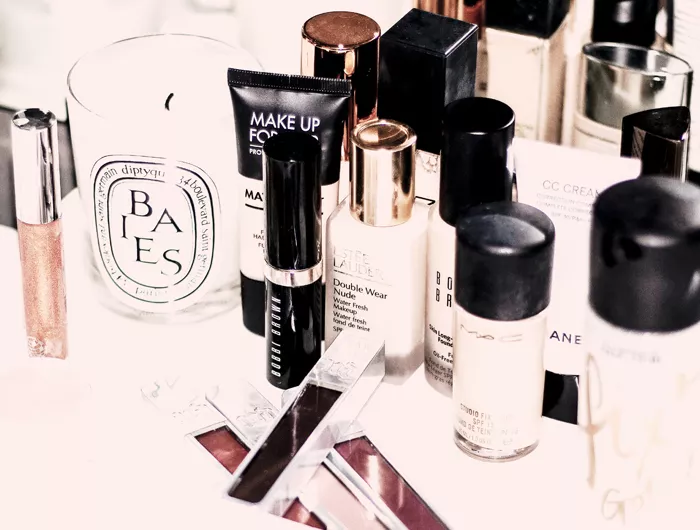PFAS found in roughly half of tested cosmetics

Johanne Kristensen/unsplash.com.
“No one wants to get out of the swimming pool looking like a raccoon,” says Graham Peaslee, a professor of physics at the University of Notre Dame. True enough, but waterproof mascara has a price. Many companies use chemicals known as PFAS (per- and polyfluoroalkyl substances) to make cosmetics more spreadable, waterproof, or “long-lasting.” Here’s what you should know.
PFAS are everywhere. The class of more than 4,000 chemicals is used in nonstick cookware, waterproof clothing, food packaging, carpets, cosmetics, and far more.
But they come at a cost. PFAS are often called “forever chemicals” because they may take thousands of years to break down. That means they accumulate in soil, water, air...and our bodies.
And while scientists don’t have definitive answers on the health risks, exposure to some PFAS has been linked to problems like cancer, higher cholesterol levels, and immune suppression.
PFAS from makeup can enter the body through the skin, the tear ducts, or the gut. But until Graham Peaslee looked, no one knew how often PFAS are added to cosmetics in North America.
PFAS in cosmetics
Peaslee’s team tested 231 cosmetics including foundations, concealers, mascaras, lip products (like lipsticks, liners, glosses, and balms), eye products (like shadows, liners, and pencils), and more. Roughly half of the foundations, lip products, eye products, and mascaras contained high levels of fluorine, an indicator of PFAS. (The study didn’t name brands.)
“Fluorine levels as high as we saw suggest that PFAS were intentionally added,” says Peaslee. “It’s not just contamination from the assembly line or something like that.”
Especially fluorine-laden categories included waterproof mascaras, liquid lipsticks, and cosmetics advertised as “long-lasting” or “wear-resistant.”
From there, Peaslee tested 29 foundations, mascaras, and lip products for 53 individual PFAS. All tested positive for at least four. A handful contained as many as 13 PFAS.
“The most common question I get is ‘How can I avoid PFAS in my makeup?’” says Peaslee. “Unfortunately, I can’t tell you.”

Just one of the 29 products he tested for individual PFAS had PFAS listed as ingredients. “Labeling is totally inadequate,” he notes.
And you can’t assume that, say, an ordinary (rather than “long-lasting” or waterproof) lipstick or mascara is PFAS-free.
Don’t wear makeup? PFAS in cosmetics still matter.
“These chemicals get washed down the drain or the leftovers make their way to a landfill,” says Peaslee. “Eventually, it all contaminates the environment or ends up in our water supply.”
(In October, the EPA proposed limits on PFAS in drinking water.)
“Cosmetic companies should require their supply chains to be PFAS-free,” says Peaslee. “They need an independent lab to regularly test a random sample of their products. That’s not impossible or terribly expensive.”
“The good news from the study is that not all cosmetics had PFAS, so it can be done.”
Some changes in the works
In 2020, California banned 13 kinds of added PFAS in cosmetics as of January 2025. That should lead companies to eliminate those PFAS nationwide.
At Ulta, you can choose brands that use “clean ingredients,” which means they are made without PFAS (and several other chemicals).
And in response to Peaslee’s study, a group of senators has introduced the No PFAS in Cosmetics Act, which would require the FDA to ban added PFAS in cosmetics (including makeup, lotion, perfume, shampoo, and nail polish).
“If we can avoid using these chemicals in cosmetics,” says Peaslee, “why wouldn’t we?”
Tags
Topics

The latest
Our best (free) healthy tips
Our free Healthy Tips newsletter offers a peek at what Nutrition Action subscribers get—scrupulously researched advice about food of all kinds, staying healthy with diet and exercise, and more.

